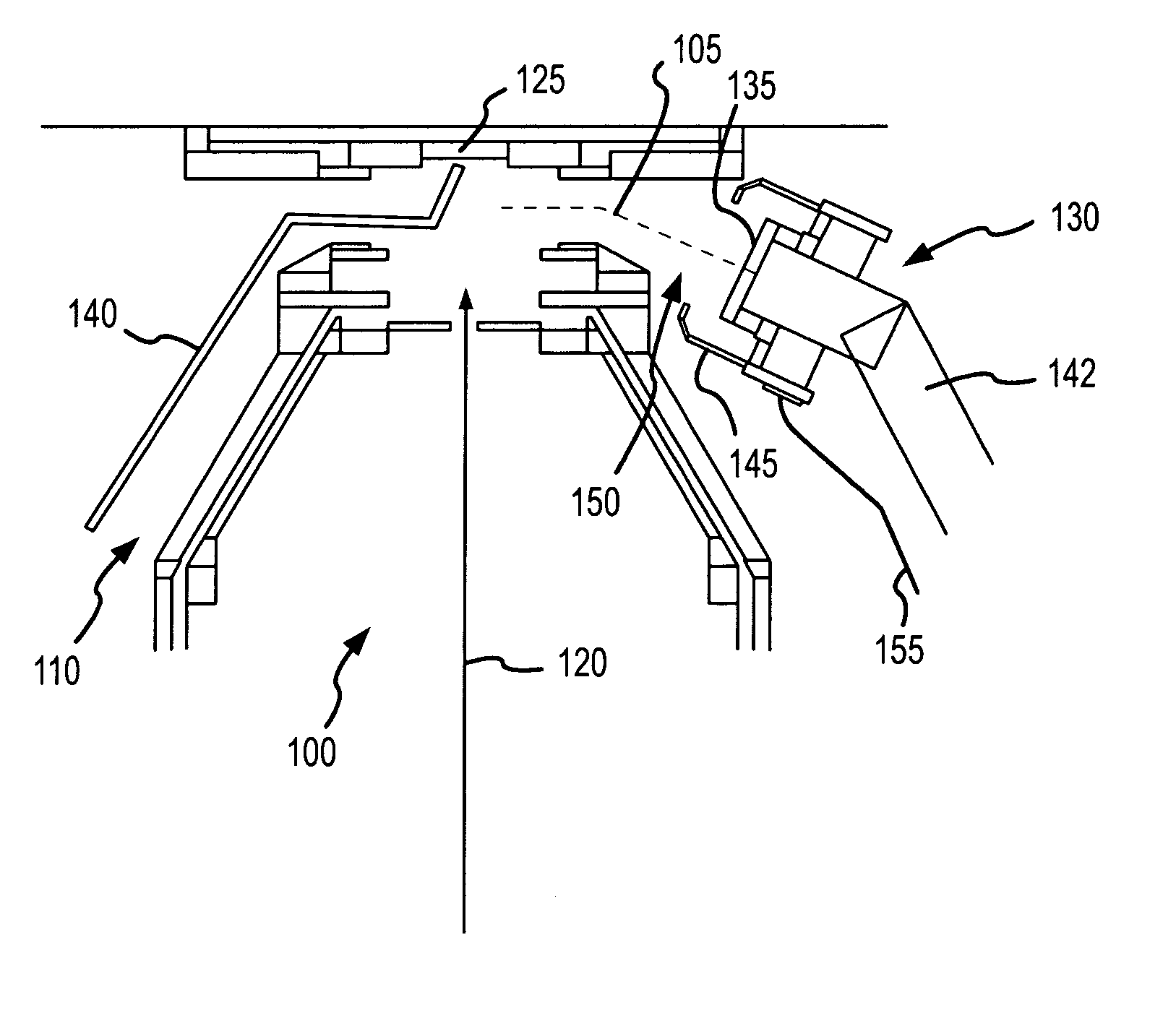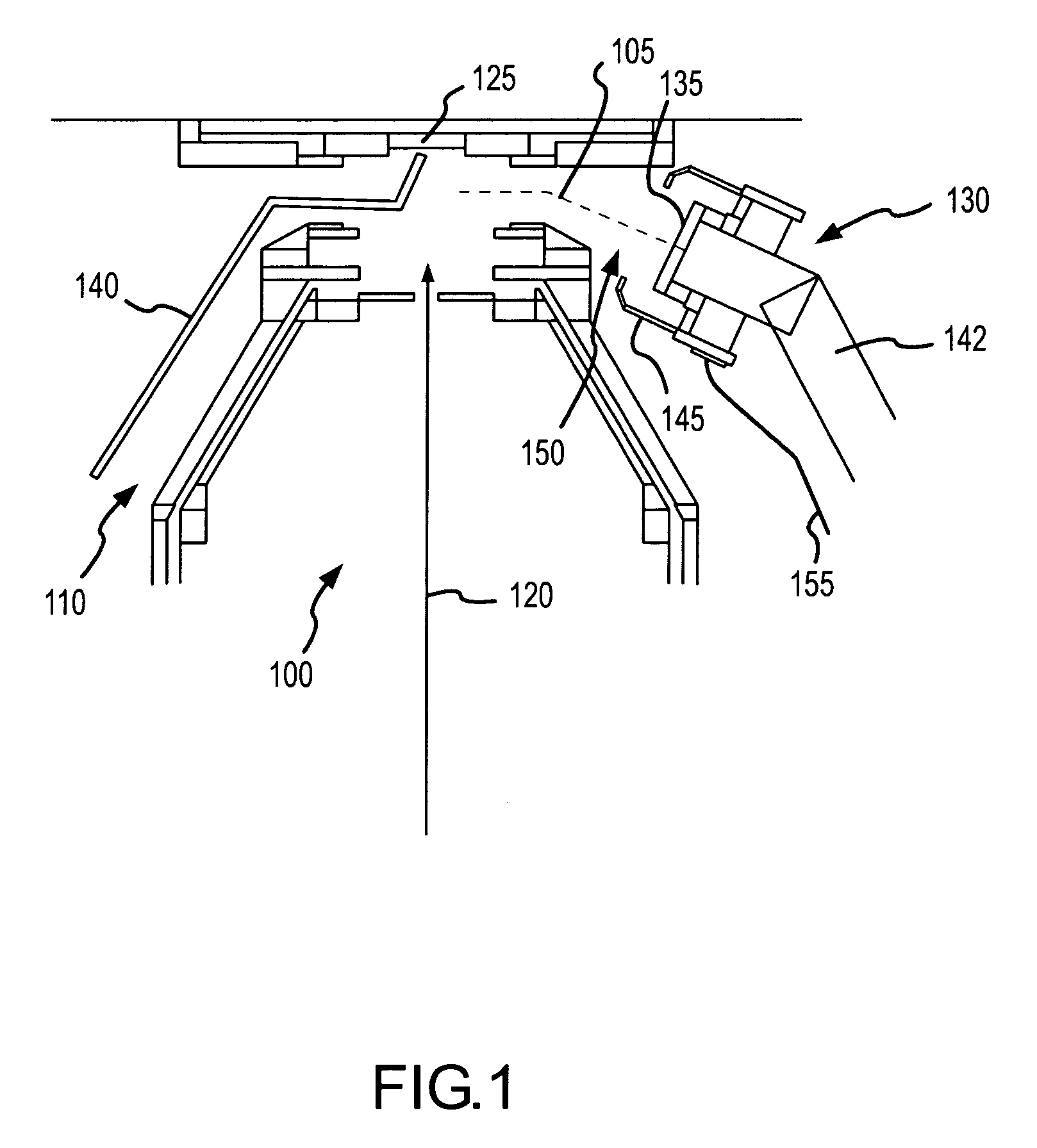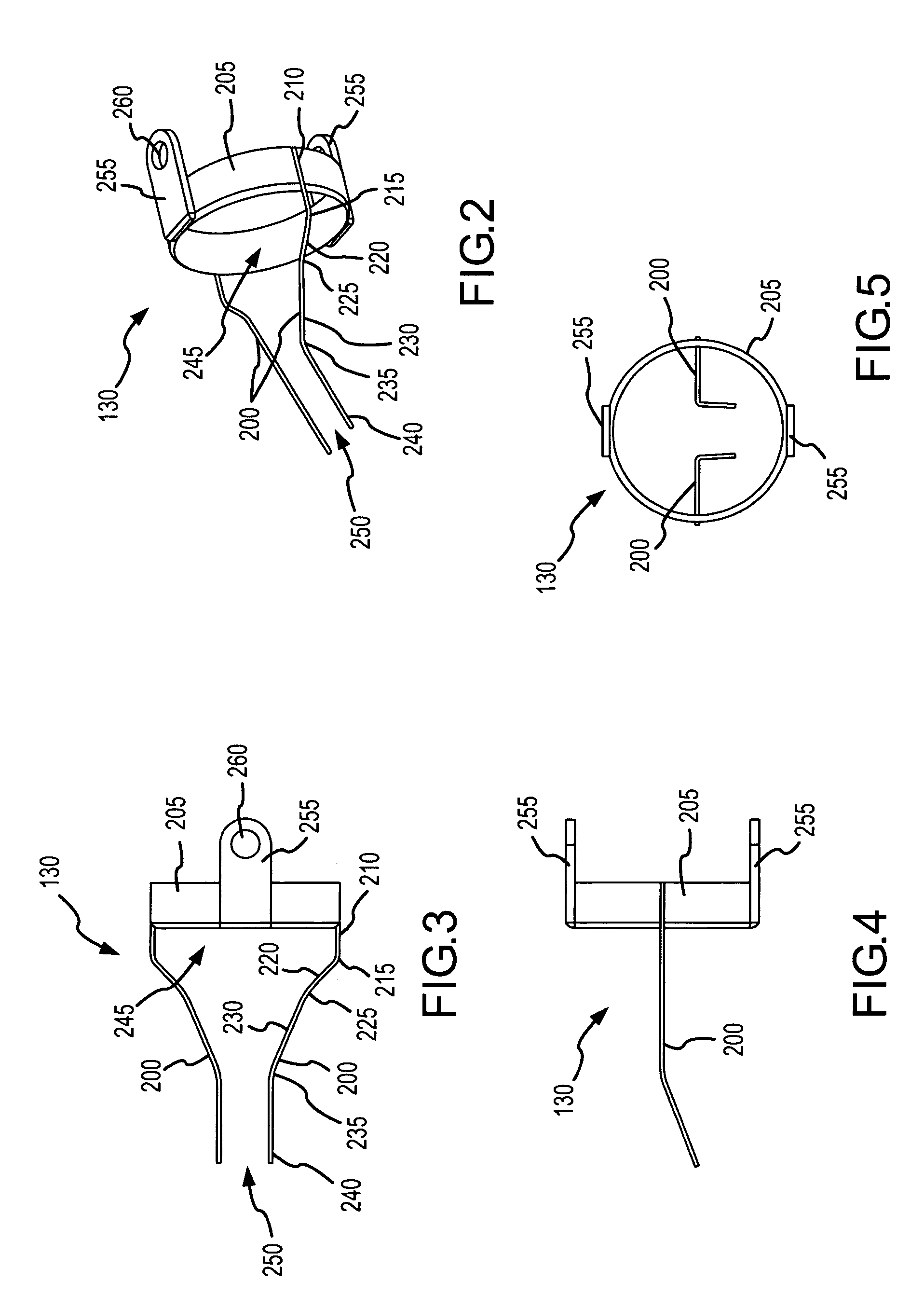Charged particle guide
a technology of charged particles and guide rods, applied in the field of charged particle guides, can solve the problems of increasing endpointing difficulty, affecting the accuracy of charge-based guide rods, and reducing the efficiency of secondary electron collection and its attendant image improvement, so as to reduce wear
- Summary
- Abstract
- Description
- Claims
- Application Information
AI Technical Summary
Benefits of technology
Problems solved by technology
Method used
Image
Examples
Embodiment Construction
[0038] One aspect of the present invention involves a charged particle guide that attracts and directs charged particles toward a charged particle detector, such as a scintillator disk of a secondary electron detector, and thereby improves its collection efficiency. The charged particle guide includes a plurality of members extending from the charged particle detector toward a sample. A bias voltage, or range of voltages, is applied to the members to introduce an electric field proximate the sample. When employed in a tool that generates a charged particle beam and directs the beam onto the sample, the electric field attracts charged particles emitted from the sample and directs the charged particles to the charged particle detector.
[0039] One particular configuration of the invention involves a charged particle guide coupled with a secondary electron detector of a FIB tool. The charged particle guide, in one particular configuration, includes a pair of wires extending from seconda...
PUM
 Login to View More
Login to View More Abstract
Description
Claims
Application Information
 Login to View More
Login to View More - R&D
- Intellectual Property
- Life Sciences
- Materials
- Tech Scout
- Unparalleled Data Quality
- Higher Quality Content
- 60% Fewer Hallucinations
Browse by: Latest US Patents, China's latest patents, Technical Efficacy Thesaurus, Application Domain, Technology Topic, Popular Technical Reports.
© 2025 PatSnap. All rights reserved.Legal|Privacy policy|Modern Slavery Act Transparency Statement|Sitemap|About US| Contact US: help@patsnap.com



